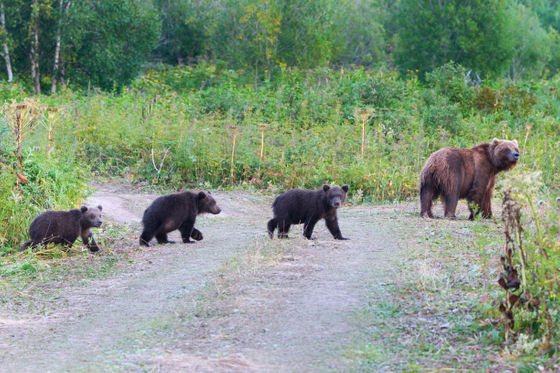How did pandemic lockdowns change wildlife behavior?

In 2020, when the pandemic of the new coronavirus infection (COVID-19) raged, city blockades (lockdowns) were implemented to limit outings and economic activities around the world. The impact has spread not only to human society but also to animals, such as
Behavioral responses of terrestrial mammals to COVID-19 lockdowns |
https://doi.org/10.1126/science.abo6499
While humans were in strict lockdown, wild mammals roamed further – new research
https://theconversation.com/while-humans-were-in-strict-lockdown-wild-mammals-roamed-further-new-research-207351
In order to stop the spread of COVID-19 infection, it is estimated that 4.4 billion people, more than half of the world's population, will be under severe restrictions in 2020, and a global suspension of social activities unprecedented in history. The coined word ' Anthropause ' was created by. In a city where shops, companies, and schools have been closed and people have disappeared, wild animals are walking the streets with their own faces, and the sight is said to be like the science fiction movie ' I Am Legend '.
Witnesses around the world witness wild animals dominating cities where people have disappeared due to lockdown - GIGAZINE

Meanwhile, zoologists who saw the lockdown as 'a great opportunity to learn about human impacts on wildlife behavior' founded the COVID-19 Biologging Initiative in 2020 to collect data during the lockdown. We brought together information about behavioral changes in a variety of animals that had
Animal migration patterns can be influenced by things like humans and vehicles, and lockdowns make it impossible to separate the close ties between human and animal behavior that would otherwise be possible. That's right, says Robert Patchett of the University of St Andrews, an initiative member.
Patchett and Marley Tucker, an ecologist at Radboud University in the Netherlands, led an international team of 174 scientists to find out how the behavior of large terrestrial mammals changed during the panthemic. was analyzed.
The data analyzed by the research team pooled data from more than 2,300 individuals in all 43 species, including elephants, giraffes, bears, deer, and cougars, to help predict behavior and movement during the 2020 lockdown. We were able to see how patterns have changed compared to a year ago.
The analysis found that the frequency of large mammals approaching roads increased by 36% during the lockdown period. It was also found that the distance traveled over 10 days increased by 73%, while the amount of travel per hour decreased by an average of 12%.

Patchett believes that animals are getting closer to roads because humans are gone, allowing them to explore new areas.
For example, study co-author Chris Wilmers of the University of California, in another study , found that cougars, cautious animals that normally avoid areas inhabited by humans, were more likely than ever in 2020, when lockdowns were in place. It is reported that it was found to be quite close to the city area by comparison.
While there was great variation in overall migration patterns, individual responses were disjointed and highly variable among species. This could be due to regional differences in lockdown policies, but it is also possible that species differ in their ability to change behavior.
“These findings are very important because they show that human behavior directly influences animal behavior,” said Patchett. Habits can be changed to behave in a way that favors animals, for example, by adjusting traffic in places important to animal migration, and by making national parks more considerate of nocturnal animals. Inside, you can make the car run only during the day,' he said.
Related Posts:







